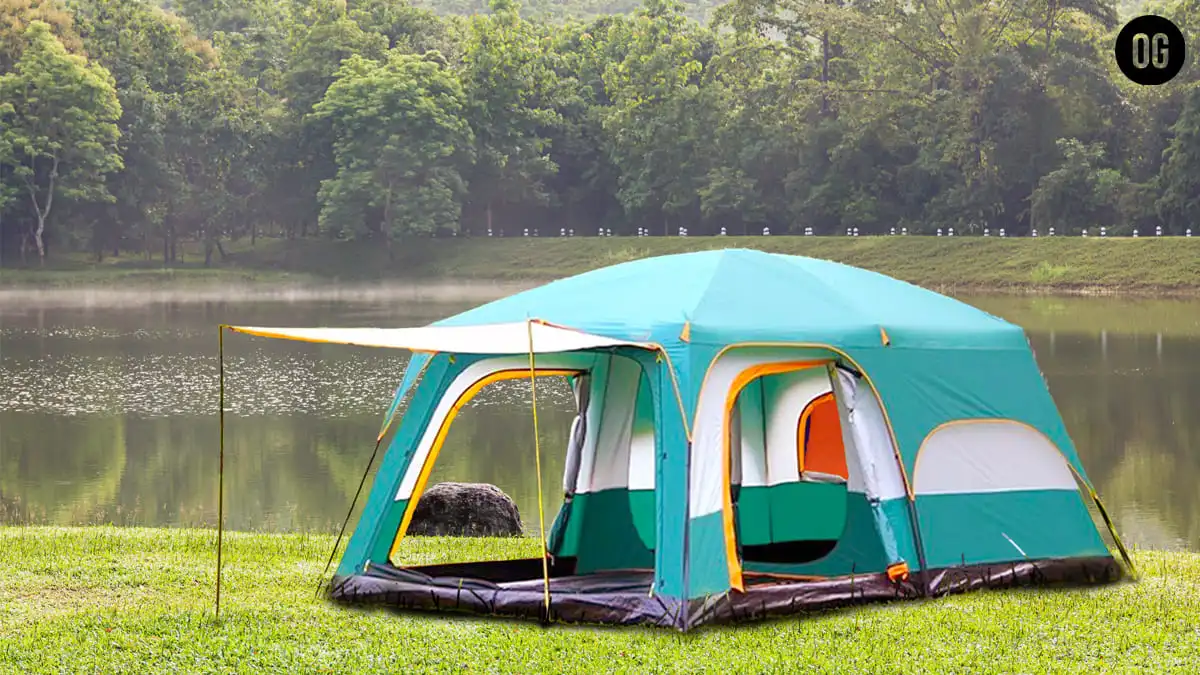7 Tips On Maintaining and Cleaning Your Camping Tent: Should You Really Care?

Maintaining and cleaning your camping tent keeps it in good shape for a long period and you can rely on it fully for your outdoor adventures.
Table of Contents
Neglecting tent care can lead to premature wear, and tear, and compromised waterproofing, turning your camping trips into uncomfortable ordeals.
However, by dedicating attention to regular cleaning, careful setup, and diligent post-trip care, you not only extend the lifespan of your best camping and backpacking tent but also ensure a comfortable and cozy haven amidst nature’s beauty.
This article will show all of the key points necessary for maintaining and cleaning your camping tent so it remains intact and provides optimal performance.
While maintaining and cleaning your camping tents it is also very important to know about different types of camping tents we already discussed 13 popular camping tent types in India which are made of top quality camping tent materials and come under the category 3-season and 4-season tents.
Related: 7 Best Tents For Camping And Backpacking
Do Before Setting Camping Tent

Embarking on a successful camping expedition requires more than packing your gear and heading out.
Before setting up a camping tent preparation is compulsory in protecting your camping tent and confirming a comfortable outdoor stay.
Choosing the Right Campsite: Opt for a campsite that offers a level and well-drained area, avoiding rocky or uneven terrain that could strain your tent’s structure. Position your tent away from potential hazards like dead trees, rocky overhangs, or areas prone to flooding.
Clearing the Campsite: Before setting up your tent, meticulously clear the site of any debris, sharp objects, or protruding rocks that could puncture the tent floor.
This step minimizes the risk of wear and tear, preventing potential damage to the tent’s fabric and zippers.
Using a Ground Tarp or Footprint: Placing a ground tarp or footprint underneath your tent serves as a protective barrier against moisture, abrasion, and sharp objects.
This extra layer shields the tent’s bottom from direct contact with the ground, reducing the risk of punctures and extending its lifespan.
Do This During Camping

Maintaining and cleaning your camping tent are both key factors in its lifespan and enhancing your camping experience.
Let’s look at essential practices to protect the integrity of the tent while simultaneously increasing comfort during outdoor adventures.
Proper Setup Techniques: How you set up your tent significantly influences its durability.
When assembling your tent, especially when setting large family camping tents, avoid pulling excessively on seams and fabric.
Gently tension the material to prevent unnecessary stress in these areas, preventing potential tears and prolonging the tent’s life.
Tensioning Guidelines for Optimal Rainfly Performance: The rainfly is your tent’s primary defense against rain and wind. Ensure it is adequately tensioned to create a taut surface.
This prevents water from pooling, promotes efficient water runoff, and prevents excess strain on the tent’s structure during inclement weather.
Minimizing Dirt and Moisture Inside the Tent:
Using a Doormat or Small Rug: Placing a doormat or small rug at the entrance of your tent acts as the first line of defense against dirt.
This prevents soil from being tracked inside, reducing abrasion on the tent’s floor and minimizing the need for extensive cleaning.
Changing Clothes Before Entering: Changing out of dirty or wet clothes before entering the tent prevents the introduction of moisture and grime.
This practice also enhances your comfort inside the tent, maintaining a clean and pleasant environment.
Keeping Food Outside to Avoid Spills: Food and liquids can create messes that are not only unpleasant but can also attract unwanted visitors like insects and critters.
Store your food securely in sealed containers and keep them outside the tent to prevent spills and odors.
Comprehensive Guide To Tent Cleaning Basics
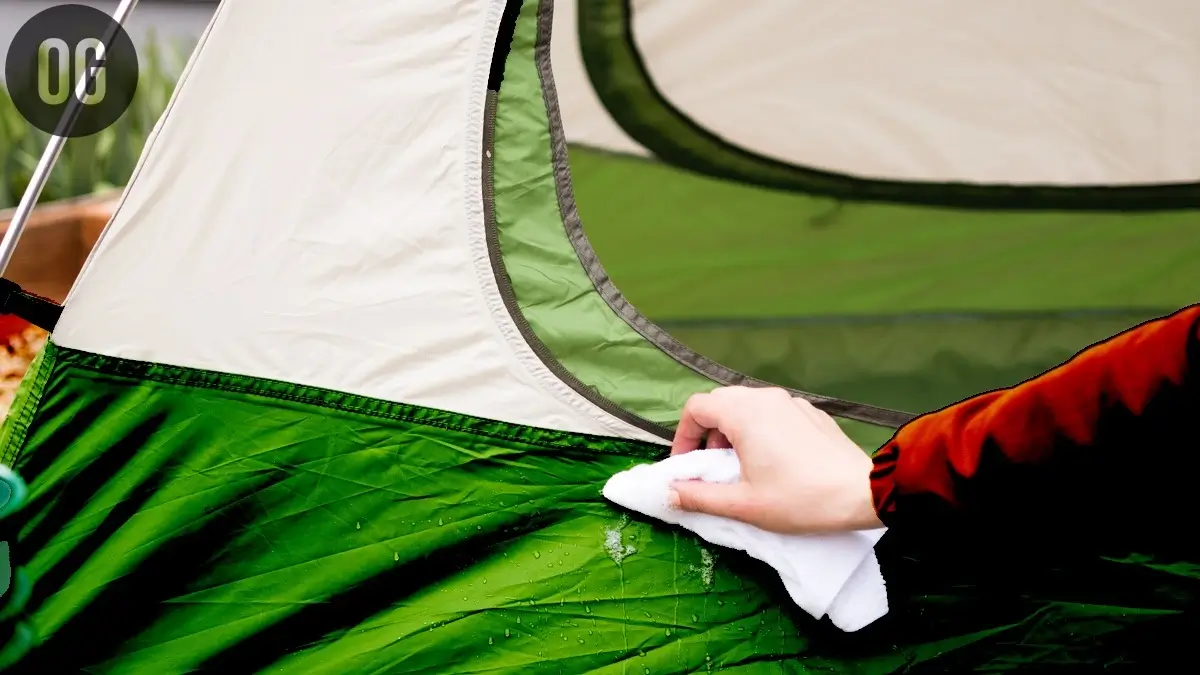
Camping provides an unforgettable adventure in nature, but can often leave behind dirt and grime that wreak havoc on your tent. Here is a comprehensive guide on mastering tent cleaning basics.
Regular Maintenance Routine:
A consistent maintenance routine prevents dirt buildup and prolongs your tent’s lifespan. Implement the following steps after every camping trip:
Brushing off Dirt and Debris: Use a soft-bristle brush to gently remove surface dirt and debris from your tent’s exterior.
Pay extra attention to seams and high-traffic areas where particles tend to accumulate.
A regular brush-down helps prevent abrasion and ensures your tent stays in top condition.
Shaking Out Sand and Dust: Give your tent a good shake to dislodge sand, dust, and loose dirt.
Hold the tent by its poles and gently shake it while ensuring the door is open.
This step is particularly effective in preventing these particles from working their way into the fabric and zippers.
Spot Cleaning for Small Stains:
Promptly address small stains to prevent them from becoming permanent blemishes on your tent’s surface. Follow these steps for effective spot cleaning:
Using Mild Soap and Water: Create a cleaning solution by mixing a small amount of mild, non-detergent soap with lukewarm water.
Avoid harsh detergents, bleach, or other strong cleaning agents, as they can damage the tent’s waterproof coatings.
Gently Scrubbing with a Soft Brush or Cloth: Dip a soft brush or cloth into the soapy water solution, then lightly scrub the stained area using circular motions.
Be gentle to avoid damaging the fabric. Rinse the area thoroughly with clean water to remove any soap residue.
Dos and Don’ts:
Do: Use gentle cleaning products, lukewarm water, and a soft brush or cloth.
Do: Prioritize spot cleaning over full submersion to preserve waterproof coatings.
Do: Handle zippers with care to avoid damage or snagging.
Don’t: Use harsh detergents, bleach, or abrasive scrubbing tools.
Don’t: Machine wash or dry your tent, which may compromise the fabric’s integrity.
Don’t: Store your tent in a compressed state for extended periods.
Complete Cleaning After Trips For Restoring Your Tent’s Durability
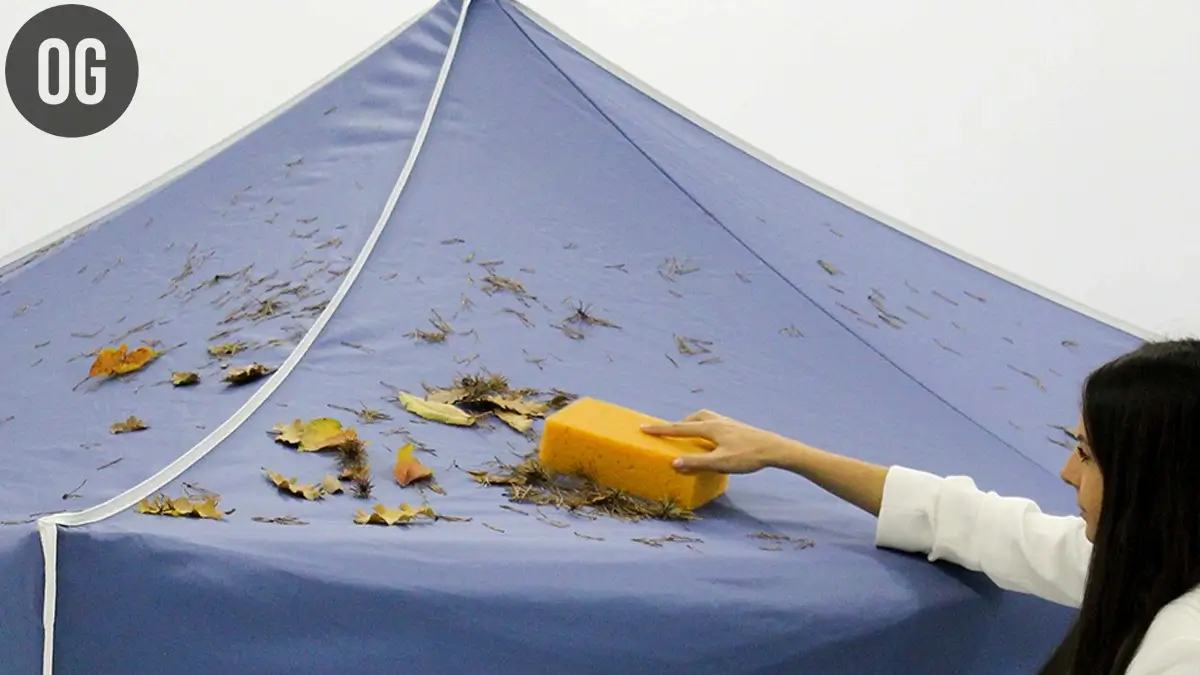
Maintaining and cleaning your camping tent is vital. It silently witnesses your outdoor adventures whether it is solo backpacking camping or high-altitude Himalayan camping.
Proper cleaning after each expedition revitalizes its look and extends its lifespan, detailed in this guide.
Supplies Needed for Deep Cleaning:
Gather the following supplies to ensure a successful deep-cleaning process:
Mild, non-detergent soap
Soft-bristle brush or sponge
Lukewarm water
Clean, lint-free cloths
Bucket or basin
Hose or access to running water
Tent-specific fabric cleaner (if available)
Seam sealer (if necessary)
Setting Up the Tent for Cleaning and Drying:
Choose an open, well-ventilated area to set up your tent for cleaning and drying.
Follow these steps:
Tent Assembly: Set up your tent according to the manufacturer’s instructions. This provides easy access to all parts of the tent during cleaning.
Rainfly Removal: If your tent has a rainfly, remove it to clean it separately. This ensures thorough cleaning and allows you to focus on the tent body.
Washing the Tent Fabric:
The fabric of your tent deserves special attention. Here’s how to clean it effectively:
Hand-Washing Techniques: Fill a bucket or basin with lukewarm water and add a small amount of mild, non-detergent soap.
Dip a soft brush or sponge into the soapy water and gently scrub the tent fabric. Focus on areas with visible dirt or stains. Rinse with clean water using a cloth or sponge to remove any soap residue.
Machine Washing Precautions: While some tent fabrics are machine washable, it’s essential to follow the manufacturer’s guidelines.
Use a front-loading machine on a gentle cycle with cold water and mild detergent. Ensure the zippers are fully closed and use a mesh laundry bag to protect the tent from friction. Avoid using fabric softeners or bleach.
Cleaning the Zippers and Mesh Panels:
Maintaining zippers and mesh panels ensures smooth functionality and ventilation:
Zippers: Gently clean zippers using a soft brush to remove dirt and debris. Lubricate them with a silicone-based zipper lubricant to prevent corrosion and enhance their lifespan.
Mesh Panels: Use a soft brush or cloth to remove dirt and dust from mesh panels. Avoid excessive scrubbing to prevent damaging the delicate mesh.
Cleaning Tent Poles and Stakes:
Tent poles and stakes also require attention to maintain their effectiveness:
Poles: Wipe down tent poles with a clean, damp cloth to remove dirt and grime. Ensure they are completely dry before storage to prevent corrosion.
Stakes: Scrub stakes with a brush to remove dirt and mud. Rinse thoroughly and dry before packing.
Drying and Storing is Also Very Important
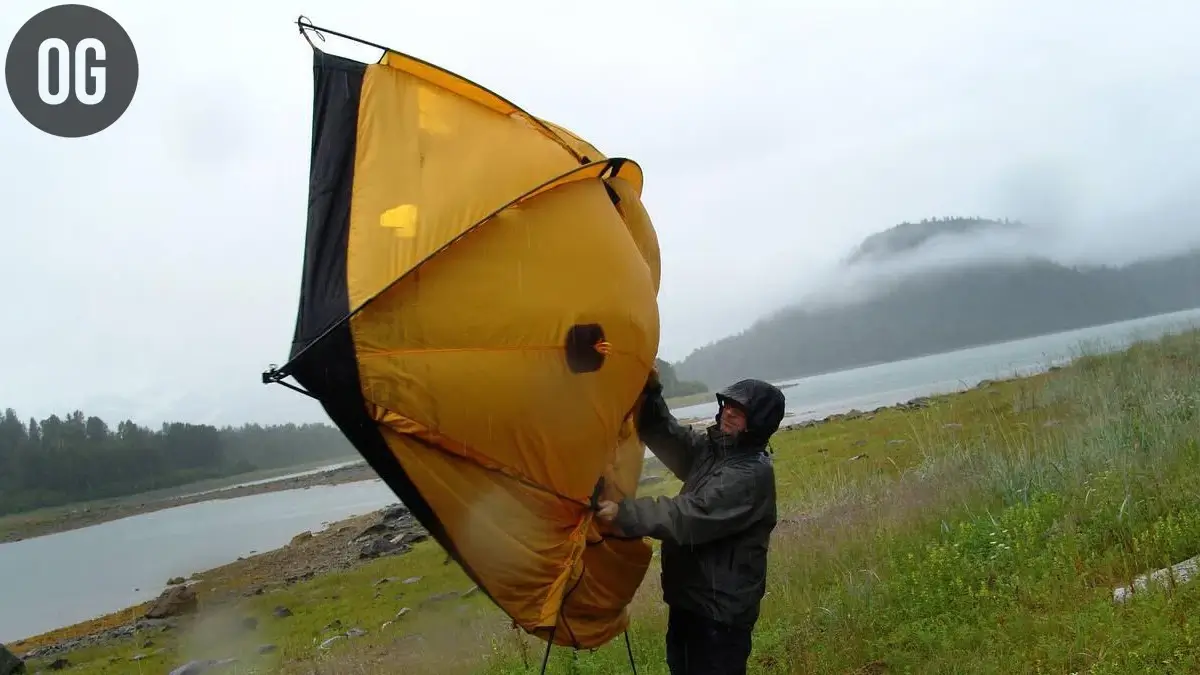
Properly caring for your camping tent doesn’t end with a thorough cleaning; the way you dry and store it is equally crucial.
By adhering to effective drying and storage practices, you safeguard your tent against the damaging effects of moisture, mold, and undue wear.
Let’s delve into the essential steps to ensure your tent remains in peak condition for your next outdoor adventure.
Importance of Proper Drying to Prevent Mildew and Mold:
Proper drying isn’t just a formality – it’s a vital step to prevent the growth of mildew and mold.
These unwelcome intruders thrive in damp, dark environments and can compromise your tent’s fabric, stitching, and coatings over time.
Ensuring thorough drying after cleaning or a wet camping trip is your first line of defense against these potentially destructive forces.
Drying Methods for Tent Components:
Drying the Fabric and Rainfly: After cleaning or returning from a damp camping trip, set up your tent and rainfly in a shaded, well-ventilated area. Avoid direct sunlight, as it can degrade the fabric and coatings.
Make sure all components, including guylines, are spread out for optimal air circulation.
Periodically adjust the tent’s position to ensure that all sides receive adequate drying time.
Drying Poles and Stakes: Clean and wipe down poles and stakes to remove any remaining dirt or moisture. Arrange them in an open space or prop them against a wall to air dry.
Ensuring poles and stakes are thoroughly dry helps prevent corrosion and extends their lifespan.
Folding and Storing the Tent Correctly:
Avoiding Sharp Creases: When it’s time to pack your tent, avoid folding it along the same creases every time. Repeated sharp creasing can weaken the fabric and coatings over time.
Instead, opt for gentle folds and alternate folding lines to distribute stress more evenly.
Using a Storage Bag or Sack: While it might be tempting to stuff your tent into its bag, this can lead to unnecessary stress on the fabric and zippers.
Instead, carefully fold the tent to prevent excessive creasing and then store it in a larger storage bag or sack. This provides ample room for the tent without compressing it excessively.
Maintaining And Cleaning Your Camping Tent For Enduring Reliability
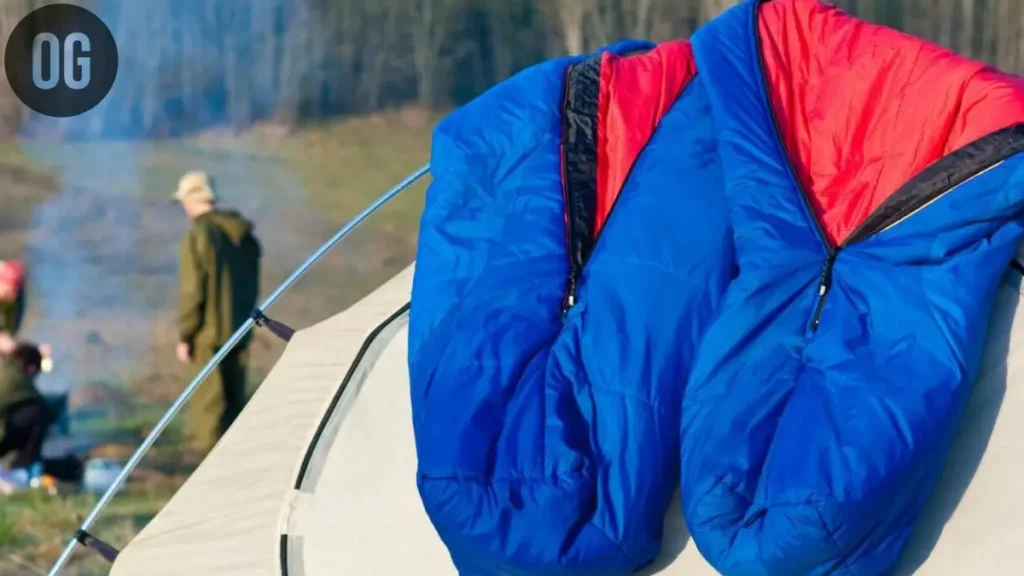
Maintaining and cleaning your camping tent is crucial for its enduring reliability. This guide highlights vital practices to sustain your tent’s performance against the passage of time and natural elements.
Inspection After Each Trip:
After every camping escapade, embark on a thorough inspection to identify potential issues early:
Fabric and Seams: Check for signs of wear, tear, or fraying along the fabric and seams. Address any damage promptly to prevent it from worsening on future trips.
Zippers and Fasteners: Test zippers, snaps, and fasteners to ensure they operate smoothly. Lubricate zippers with a silicone-based lubricant to prevent corrosion and maintain functionality.
Poles and Stakes: Inspect tent poles and stakes for cracks, bends, or other forms of damage. Damaged components should be repaired or replaced before the next adventure.
Addressing Minor Repairs Promptly:
Tending to minor repairs prevents them from escalating into major issues:
Torn Fabric: Small tears or holes in the fabric can be patched using tent repair tape or adhesive patches. Ensure the area is clean and dry before applying the patch for optimal adhesion.
Seam Reinforcement: If seams are fraying, applying a seam sealer can prevent further unraveling. Seam sealers are designed to maintain the tent’s waterproof integrity.
Zipper Troubles: If zippers are sticking or jamming, clean them with a soft brush and mild soap. Lubricate with silicone-based zipper lubricant to ensure smooth operation.
Reapplying Waterproofing Treatments:
Over time, your tent’s waterproof coatings may lose effectiveness. Reapplying these treatments maintains your tent’s weather resistance:
Rainfly and Tent Body: Follow the manufacturer’s recommendations for reapplying waterproof coatings to the rainfly and tent body. These treatments restore the tent’s ability to repel water, keeping you dry during rainy adventures.
Seam Sealing: Check seams for signs of deterioration and reapply seam sealer as needed. Seam sealers prevent water from seeping through stitching holes.
Caring for Nature While Caring for Your Tent

Caring for your camping tent goes hand in hand with caring for the environment. By embracing eco-friendly practices, you can ensure your outdoor adventures leave minimal impact on nature’s delicate balance. Here’s a concise guide to incorporating environmental considerations into your tent care routine.
Leave No Trace Principles for Tent Care:
Adhering to Leave No Trace (LNT) principles ensures your tent care aligns with sustainable outdoor practices:
Plan Ahead and Prepare: Choose established campsites and adhere to camping regulations. This minimizes the impact on fragile ecosystems.
Dispose of Waste Properly: Remove all trash, food, and litter from your campsite, including small debris that can accumulate around your tent. Use designated waste disposal facilities.
Minimize Campfire Impact: Avoid setting up your tent too close to campfire areas to prevent scorching or burning of the fabric. Use established fire rings when available.
Respect Wildlife: Pitch your tent away from animal habitats and refrain from feeding wildlife. This reduces the potential for encounters that can be harmful to both you and the animals.
Be Considerate of Other Visitors: Set up your tent with respect for other campers. Keep noise levels down and ensure your campsite is tidy when you leave.
Eco-Friendly Cleaning Products and Practices:
Tent care can be environmentally conscious by choosing eco-friendly cleaning products and practices:
Biodegradable Soaps: Opt for biodegradable, non-toxic soap when cleaning your tent. These products break down harmlessly in the environment, reducing water pollution.
Minimal Water Usage: When cleaning your tent, use a minimal amount of water to conserve this precious resource. Avoid washing your tent near water sources to prevent contamination.
Reusable Cleaning Materials: Use reusable cloths, brushes, and sponges for cleaning rather than disposable options. This reduces waste and promotes sustainable living.
Avoid Harsh Chemicals: Choose natural cleaning agents when possible. Vinegar and baking soda can be effective alternatives for stain removal and deodorizing.
Conclusion
Maintaining and cleaning your camping tent serves as your compass to longevity in outdoor adventures. Regular maintenance, meticulous cleaning, and responsible practices create a lasting haven for comfortable and memorable journeys.
FAQs: Maintaining and Cleaning Your Camping Tent
Why is tent maintenance important for longevity?
Proper tent maintenance prevents wear, tear, and damage, ensuring your tent remains durable and reliable for years of outdoor adventures.
Can I machine wash my tent?
While some tents are machine washable, it’s generally recommended to hand wash with mild soap and water to preserve waterproof coatings.
How often should I clean my tent?
It’s best to clean your tent after every camping trip to prevent dirt buildup and maintain its performance.
What’s the best way to dry my tent?
Set up your tent in a shaded, well-ventilated area to air dry. Avoid direct sunlight, which can deteriorate fabric and coatings.
How do I repair small tears in my tent fabric?
Small tears can be patched with tent repair tape or adhesive patches. Ensure the area is clean and dry before applying the patch.
When should I reapply for waterproofing treatments?
Reapply waterproof coatings when you notice water no longer beads on the tent fabric or rainfly. Follow the manufacturer’s guidelines.
Can I use regular cleaning products on my tent?
It’s recommended to use mild, non-detergent soap and eco-friendly cleaning products to avoid damaging the fabric and coatings.
What’s the significance of Leave No Trace principles in tent care?
Leave No Trace principles minimize your environmental impact by promoting responsible camping practices that respect nature and other campers.
Is there a specific way to fold and store my tent?
Folding along existing seams and using a larger storage bag or sack with a relaxed fold helps prevent creases and stress on the fabric.
Why should I care about eco-friendly cleaning practices for my tent?
Eco-friendly cleaning reduces your footprint and helps preserve the environment, aligning with sustainable outdoor ethics.





